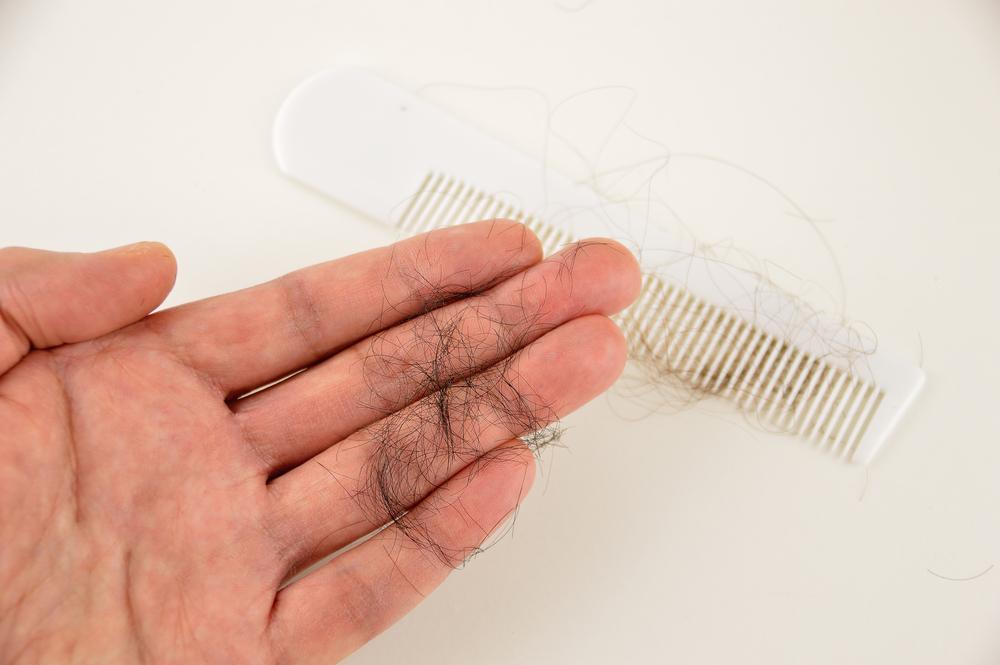
Hair loss is an embarrassing and challenging experience for an individual to endure. For women, experiencing hair loss can be distressing and frustrating, particularly when searching for a solution to mitigate or end hair loss and begin the hair regrowth process, but finding no treatment option that works. While hair loss affects both men and women of every ethnicity and culture, some types of hair loss affect certain ethnicities in higher proportion due to a number of biological and environmental factors. When analyzing African American women in particular, it is important to understand the causes of hair loss in African American women and potential treatment options that are available. In black women, hair loss can be due to a number of different conditions and stimuli, which makes it imperative to determine the root cause of the hair loss first in order to determine the right treatment option moving forward. We have put together a beginner’s guide to the various causes of hair loss in African American women and some of the treatment options available.
An Overview of the Hair Growth Process
In order to understand how the hair loss process is changed or affected by various conditions, it is vital to develop an understanding of how the hair growth process occurs normally. The hair growth process has three main phases of growth and shedding, known as anagen, catagen, and telogen. Anagen is known as the active phase of hair growth. The anagen phase of the hair growth process is the longest in duration of any of the hair growth phases. During the anagen phase, cells that make up the root at the base of the hair rapidly divide on a continuous basis. Due to this continual process of rapid cellular division, the new hair is created and pushed through the surface of the scalp. When this new hair emerges on the surface, it replaces a club hair. A club hair is a hair follicle that has ceased growing and is no longer in the anagen phase of the hair growth process. On average, individuals will grow one new centimeter of hair every twenty-eight days while in the anagen phase of the hair growth process. For many people, the anagen phase of the hair growth process lasts between two and six years. An individual’s ability to achieve long hair is determined in part by how long their active growth phase is.
The second phase of the hair growth cycle, catagen, is known as the transitional phase of the hair growth cycle. During this stage, hair follicles will transition between being actively growing, as during the anagen phase, and at rest, as during the telogen phase. The catagen phase is much shorter in duration than the anagen phase, lasting on average two to three weeks. The catagen phase marks the end of the active growth cycle as the outer root sheath of the hair begins to grow smaller in size and attaches to the root of the hair. This process is how a club hair is formed. On average, three percent of all hairs on the surface of the scalp are in this phase at any given time. The third and final phase of the hair growth cycle is the telogen phase, which is known as the resting phase of the hair growth cycle. The telogen phase often lasts for one hundred days on average and encompasses six to eight percent of the hairs on the scalp on average. When a hair follicle is in the telogen stage of the hair growth cycle, it is no longer actively growing and is instead at rest. This is the point in the hair growth process at which the formation of a club hair is complete. On average, between twenty-five and one hundred hairs that are in the telogen stage naturally shed from the scalp each day. The hair growth process begins again when the new hair once again displaces the club hair and begins actively growing. With this knowledge of the hair growth process in mind, it is possible to examine the most prevalent causes of hair loss in African American women.

Common Causes of Hair Loss in African American Women
There are a number of different conditions and circumstances that can cause a woman to begin to lose her hair. The first step to finding the right treatment option to successfully combat hair loss and hair thinning is to determine the underlying cause of the hair loss. Below are several of the common causes of hair loss in African American women.
- Alopecia: Alopecia is a type of hair loss that affects many women all over the world. In general, alopecia is regarded as a type of hair loss in which the immune system of an individual mistakenly attacks hair follicles, causing circular bald spots and hair loss to begin appearing on the surface of the scalp. In many cases, this damage is not permanent, but it may appear suddenly and affect a large percentage of the hair on the surface of the scalp. Alopecia is one of the most common causes of hair loss in African American women. African American women often experience a type of alopecia known as traction alopecia, which is caused by repeatedly pulling or exerting pressure on the hair follicles. Traction alopecia often develops when individuals pull their hair into a tight bun, ponytail, or braids frequently, particularly when styled this way in conjunction with the use of chemicals and heat on the hair. African American women that often wear their hair in cornrows, a tight ponytail, or a tight bun and use chemical relaxers on their hair are at a much higher risk for developing traction alopecia due to the stress that is being exerted on the hair follicles and the hairline. When looking for a cause of unexpected balding in African American women, traction alopecia is often a primary suspect. Traction alopecia may present symptoms such as redness on the surface of the scalp, bumps, soreness or stinging on the scalp, itching, scaling, the presence of blisters on the scalp, thin edges, or temple hair loss. To combat traction alopecia, the most important step to take is to stop putting the same stress and tension on the hair follicles by stopping or limiting the use of chemicals and heat while adopting a different, more relaxed hairstyle.
- Female Pattern Hair Loss (FPHL): Female pattern hair loss is another very common form of hair loss in women. Female pattern hair loss is also sometimes referred to as androgenetic alopecia. Female pattern hair loss is characterized by the thinning of hair on the surface of the scalp, particularly on the top of the head and the crown. Female pattern hair loss also sometimes presents with a widening of the center part of the hair. Female pattern hair loss occurs when the hair follicles begin to decrease in height, growth, and strength, becoming effectively miniaturized. During this process, some hair follicles often cease growing completely. Female pattern hair loss is often thought to be caused in part by genetic factors, as individuals are more likely to experience female pattern hair loss if someone in their directly related lineage has experienced hair loss. In addition, female pattern hair loss is sometimes thought to be caused by an underlying condition, such as an issue within the endocrine system.
- Stress: Stress is a common cause of hair loss in African American women. Hair loss or hair thinning that occurs as a result of stress if often temporary and ceases when the stressor is removed. While every individual experiences some degree of stress each day, sudden hair loss is most often caused by a significant event, such as if a close loved one passes away. This significant event or period of time is referred to as the stressor. Stress induced hair loss affects the telogen phase of the hair growth cycle by increasing the number of hairs shed during this phase. In order to stop hair loss due to stress, it is vital that the stressor be identified and measures taken to mitigate the onset and severity of the stress, such as increasing exercise, taking time to meditate, and increasing sleep.
- Dramatic Weight Loss: When losing a large amount of weight, many individuals do not consider that their endeavor to shed extra weight may have unexpected side effects such as hair loss. When a person loses a significant amount of weight, the body undergoes a changing dynamic that affects all processes within the body, including the hair growth cycle. A dramatic weight loss can sometimes cause the hair growth process to temporarily malfunction and cause hair loss or hair thinning.
- Anemia (Iron Deficiency): Anemia affects one in ten women between the ages of twenty and forty years old, making it an important cause to be aware of. When the body does not have the amount of iron it requires, it becomes iron deficient, which is also referred to as being anemic. To rectify the onset of anemia, an individual can often ingest a daily iron supplement to regulate their levels and adjust their diet to include a higher volume of foods rich in iron
- Hormonal Imbalance: The endocrine system within the body controls hormone levels within the body, but a number of other factors can skew hormone levels within the body, which can result in hair loss or hair thinning in African American women. A hormonal imbalance within the body can develop due to a number of common factors, including the ingestion of birth control pills as a form of contraception and going through the process of menopause. In addition to these two common causes of hormonal imbalances, women often experience a hormonal imbalance after giving birth to a child since the childbirth process dramatically shifts the hormones in the body. Due to these factors, some women may experience hair loss or hair thinning due to a hormonal imbalance. In many cases, the body will regulate its own hormone levels over time and the hair loss or hair thinning will cease, but in some cases women may need to seek the help of a licensed physician to determine the right treatment path to regulate hormone levels.
Treatment Options for Hair Loss in African American Women
Once the cause of the hair loss has been determined, the next step is to explore the available treatment options to find the right solution. There are a multitude of available treatment options on the market, but it is up to the individual experiencing the hair loss to find which one works best for them. One simple treatment option to begin utilizing is an oral supplement that is rich in nutrients shown to boost hair growth, such as Biotin. In addition to Biotin, many oral supplements specifically targeted at aiding in hair growth will contain ingredients such as Vitamin A, Vitamin D, Vitamin B, Vitamin C, MSM, Zinc, and Silica. Oral supplements are an easy way to improve hair health. In addition to oral supplements, another available treatment option is to utilize a topical Minoxidil treatment. Topical treatments are one of the most effective ways to stop and reverse hair loss or hair thinning by promoting natural hair growth. It is important that any topical treatment selected contain Minoxidil, as this opens up blood vessels, thereby allowing hair follicles to grow more rapidly. Scalp Med offers a non-surgical solution to hair loss through a unique two-step process. Scalp Med is a proven effective regimen that begins with the application of NutriSol®, a proprietary product that fosters an ideal environment on the scalp from which to regrow lost hair. The second phase of the process uses Vitadil®, which contains Minoxidil, and is the only product that is FDA-approved ingredient clinically proven to regrow hair. Scalp Med can regrow lost hair without the pain of surgery and without causing the itchiness and irritation commonly associated with topical hair loss treatments. In addition, Scalp Med is paraben free, sulfate free, and is not tested animals.



